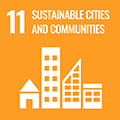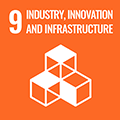Researchers at Queen’s have designed and implemented a resilient and agile wireless communications system that provides seamless connectivity to relief authorities when telecoms infrastructure is significantly impaired.
The integrated heterogeneous wireless system (IHWS) can overcome communication failures resulting from telecommunications networks that are severely damaged by natural disasters.
Research Challenge
WIRELESS COMMUNICATION SYSTEMS WHERE THEY ARE MOST NEEDED
Natural Disasters kill an average 60,000 people per year. When they strike, the physical destruction caused by floods, typhoons and storms can often cause catastrophic damage to communication and power supply networks in the affected area. For disaster management workers, such as fire brigades, rescue teams, and emergency medical services, effective and efficient communication systems are often the difference between life and death. They are critical in providing timely warnings ahead of disaster and are crucial for the response and recovery following a catastrophic event.
Vietnam is among the 10 countries worldwide most affected by natural disasters and extreme climate events, affecting over 4,000,000 people with economic losses estimated at over £1,900,000,000.
Previously used commercial solutions for communication under extreme weather conditions only had short-range coverage and limited connectivity and were not applicable in disaster-prone countries with isolated widespread rural areas and large-scale disaster scenarios. There was an urgent need to develop new approaches to overcome these limitations.
Our Approach
SEAMLESS CONNECTIVITY EVEN UNDER CRITICAL CONDITIONS
Queen’s researchers designed and implemented a Catastrophe-Tolerant Heterogeneous Telecommunications Network.
The system, which was developed in association with Duy Tan University, Nong Lam University and Thuyloi University Vietnam acts as a Telecommunications Network that integrates conventional wireless sensor networks (WSNs), and mobile cellular networks (MCNs) in order to capture environmental events and provide information into disaster recovery agencies.
The solution offers a resilient, robust, flexible, and agile wireless communications design that can provide seamless connectivity even under critical conditions, such as destroyed telecommunication or electricity infrastructure.
The system also provides early warning of natural disasters by detecting water level, vibration and wind. In cities, the IWHS can detect increases in dust, temperature, noise and carbon dioxide levels.
The work won the prestigious 2017 Newton Fund Prize awarded by the UK Government. At the award event the British Ambassador to Vietnam, said: "International cooperation with a diversity of ideas, views and good practice plays a very important role in research and innovation".
In Central Vietnam, the IHWS is implemented in two closely located areas, Quang Nam Province and Da Nang City (1,300,000 inhabitants). Populations in this area are particularly vulnerable to natural disasters.
“Our research at Queen’s University Belfast is helping to solve the global problem of communicating during a natural disaster. The system which we have created has many potential applications in disaster, climate change and carbon dioxide level monitoring and management, as well as in the provision of e-health services.”
- Dr Trung Duong
What impact did it make?
SAVING LIVES AND LIVELIHOODS
Vietnam’s leading mobile operator Viettel (VTTEK) praised the value of IHWS via its Head of 5G Research, “Through the existence of this project, VTTEK has the opportunity to support Vietnam and Binh Duong and Da Nang provinces in particular in natural disaster prevention and search and rescue”
The Vietnam Disaster Management Authority and one of the three biggest Vietnamese mobile operators, MobiFone, have successfully incorporated the system into their national disaster response plans. In November 2017 the coastal provinces from Quang Nam to Thua Thien Hue suffered a huge storm with extensive floods. Using IHWS, via the MobiFone network, effectively announced early warning information to the community. The network played a key role in evacuation missions and saving properties of farmers and villagers (approximately 1.2 million people). Without the disaster communications technology, such an effort would not have been possible.
Our impact
Impact related to the UN Sustainable Development Goals
Learn more about Queen’s University’s commitment to nurturing a culture of sustainability and achieving the Sustainable Development Goals (SDGs) through research and education.








